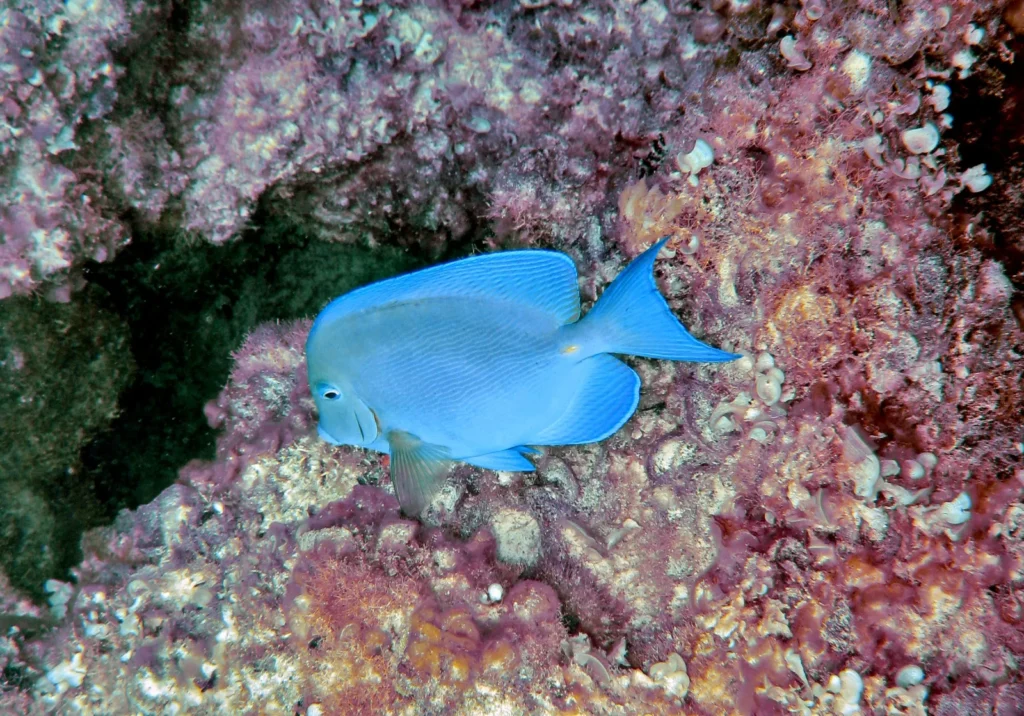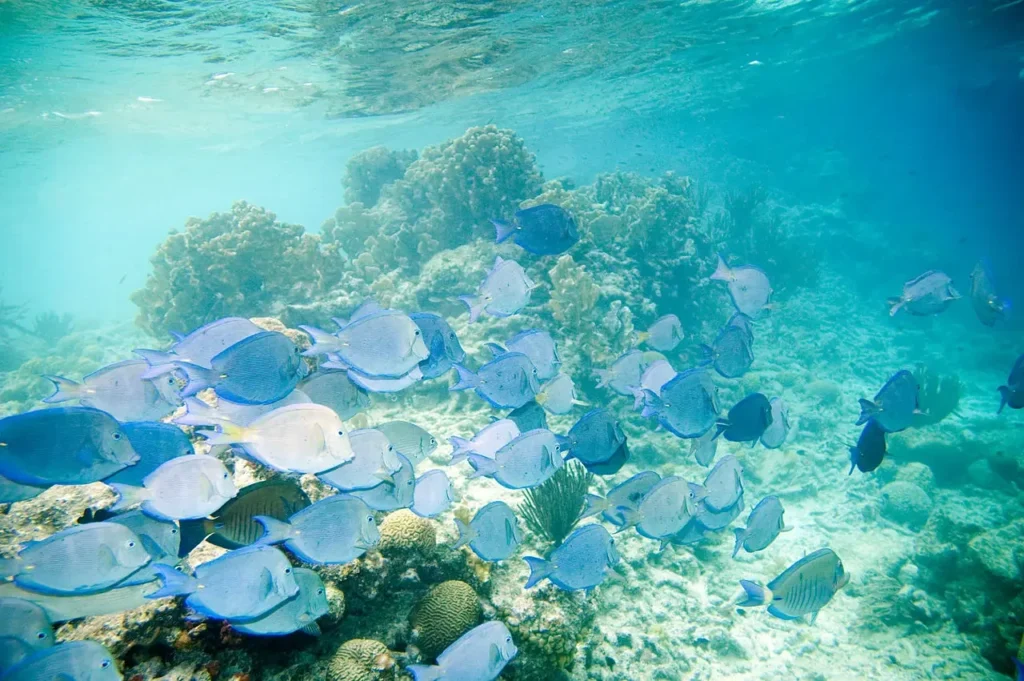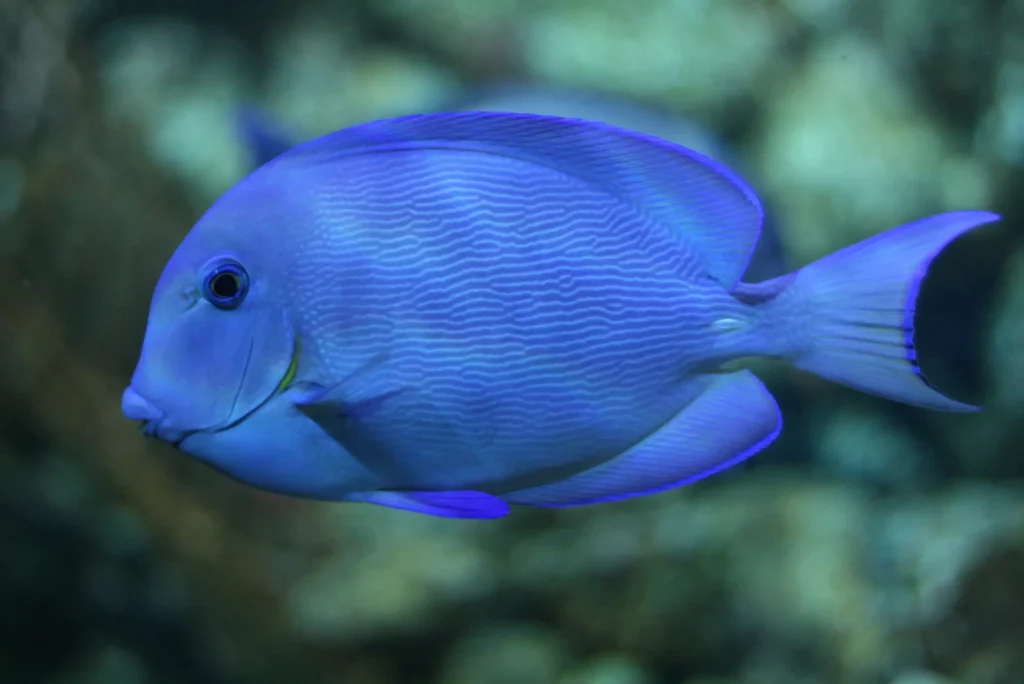Blue Surgeon (Acanthurus coeruleus), also known as Blue Surgeon, Atlantic Surgeon, or Caribbean SurgeonIt is one of the most colorful surgeon fish found in the warm waters of the Atlantic Ocean. Its awesome bright blue color and its active lifestyle makes it an integral part of coral ecosystems.
✔ Bright coloring that changes over the course of life
✔ Sharp "scalpels" near the tail for protection
✔ An essential coral reef cleaner
✔ Popular aquarium fish
Let's dive into the world of this amazing sea dweller!

Scientific classification
✔ The Kingdom: Animals (Animalia)
✔ Type: Chordal (Chordata)
✔ Class: Lucheperi pisces (Actinopterygii)
✔ Row: Perch-like (Perciformes)
✔ Family: To the surgeon (Acanthuridae)
✔ Gender: Acanthurus
✔ View: Acanthurus coeruleus (Bloch & Schneider, 1801)
📌 Interesting!
Title coeruleus it comes from Latin and means "blue", which perfectly reflects the color of this fish.
Appearance and anatomical features
🔹 Body shape:
✔ Oval, strongly laterally compressed body
✔ Oblong mouth with small teeth
🔹 Color scheme:
✔ Young individuals - yellow color
✔ Large - bright blue with darker fins
✔ Transition stage - mixed blue and yellow shades
🔹 Sizes:
✔ Average length: 20-25 cm
✔ Maximum length: up to 39 cm
✔ Weight: up to 600 g
🔹 Protective mechanism:
✔ Has sharp bony plates near the tailused as a weapon
✔ Can become darker under stress
📌 Interesting!
Blue surgeon changes its color throughout life: young individuals yellow ones, and adults bright blue.

Range and habitat
🌍 Where does the blue surgeon live?
, Western Atlantic: from Florida and Bermuda to Brazil
✅ Caribbean Sea and Gulf of Mexico
🔹 Living environment:
✔ Prefers coral reefs
✔ Occurs at depths of from 2 to 40 meters
✔ Often swims near sea grasses and rocky reefs
📌 Interesting!
The blue surgeon often forms large groups swimming along reefs in search of food.
Lifestyle and behavior
🔹 Social behavior:
✔ Live in packs or alone
✔ Young individuals sometimes form large shoals
🔹 Defense mechanisms:
✔ When threatened by fish turns his tail away to the predator and uses a "scalpel"
✔ Can change color for disguise
🔹 Life span:
✔ In nature: 7-12 years old
✔ In captivity: up to 15 years old
📌 Interesting!
Blue surgeons are very territorial and can aggressively defend their area from other herbivorous fish.

Nutrition and role in nature
🥗 What does the blue surgeon eat?
, Seaweed
, Sea herbs
✅ Small invertebrates
🔹 Environmental role:
Important "gardener" of coral reefs-prevents excessive algae growth
✔ Builds ecosystem balance by keeping reefs clean
📌 Interesting!
Sometimes these fish swallow sand to get the minerals they need for digestion.
Reproduction and development
🔹 Method of reproduction:
✔ Spawning takes place in the open sea
✔ Females lay eggs that are fertilized in water
🔹 Development:
✔ Larvae swim in the water column for several weeks
✔ After metamorphosis, they settle near reefs
📌 Interesting!
Blue surgeons appear at night during the full moonwhich helps the caviar disperse better.
The Blue Surgeon and the Man
🔹 Popularity in aquariums:
✅ One of the most popular types for marine aquariums
✅ Needs minimum 300 liters water
✅ Sensitive to water quality
🔹 Industrial value:
✅ Caught for aquarium trade
✅ In some regions it is consumed as food
📌 Interesting!
The popularity of blue surgeons increased after the release of the cartoon “In search of Nemo”, which led to an excessive catch of these fish.

Species conservation and environmental threats
🔹 Population status:
✅ Number relatively stable, but it is being reduced in some regions
🔹 Main threats:
Ruinuvannya coral reef destruction
Zabrudnennya ocean pollution
Supramir overfishing for aquariums
🔹 Security measures:
✔ Protecting coral reefs
✔ Controlled catch
✔ Captive rearing to reduce pressure on natural populations
📌 Interesting!
Some countries have already started breeding blue surgeons on special marine farms.
Conclusion
🐠 The blue surgeon (Acanthurus coeruleus) is not only a beautiful fish, but also an important regulator of the marine ecosystem.
💡 What do you think of this Atlantic Ocean dweller? Would you like to see it in nature? 🌊✨